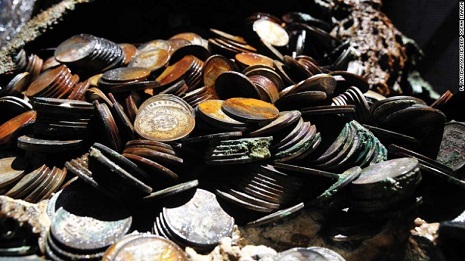In November 1942, the unguarded SS City of Cairo was sunk by a German U-boat while carrying 296 civilians and cargo that included 100 tons of silver.
The vessel sunk to more than 16,800 feet under the surface (5,150 meters) where it went undiscovered until 2011 when Deep Ocean Search decided to go looking for it.
The sinking was the stuff of legend. The City of Cairo was bringing silver rupees from India to England as part of the war effort. After a stop in Brazil, two torpedos sank the ship in the Atlantic.
After the ship went under, the U-boat reportedly surfaced and the captain said to the survivors in lifeboats: "Goodnight, sorry for sinking you." The captain`s lament is the title of a book about the event.
Only a handful of people died as the ship sank but about 100 more passed away during the desperate attempt of the six boats to make it to land, which was hundreds of miles away.
When the last of the lifeboats was found 51 days later, all but two people in it had died.
Deep Ocean Search said in a news release that during the 2011 search it located an unnatural object on radar. A sub found the City of Cairo split into two parts, buried by silt.
"Under contract to the UK Ministry of Transport, DOS recovered several tens of tons of silver coins from a depth of (5,150 meters)," the company said. The depth is a world record, the company claimed.
Other deep-water operations reported in the media that are close to this depth include the 1987 search for the wreck of a South African Airways plane at 16,000 feet (4,700 meters) and the discovery of the SS Gairsoppa at about 15,400 feet (4,800 meters) in the North Atlantic in 2011.
The BBC reported the City of Cairo salvage operation was completed in September 2013, but the British government made the company keep it secret until this week.
The coins were melted and the silver sold, the BBC reported. Deep Ocean Search got a percentage of the sale, and the UK Treasury the rest, according to the BBC.
At today`s rates, 100 tons of silver would be worth about $50 million.
More about:
















































